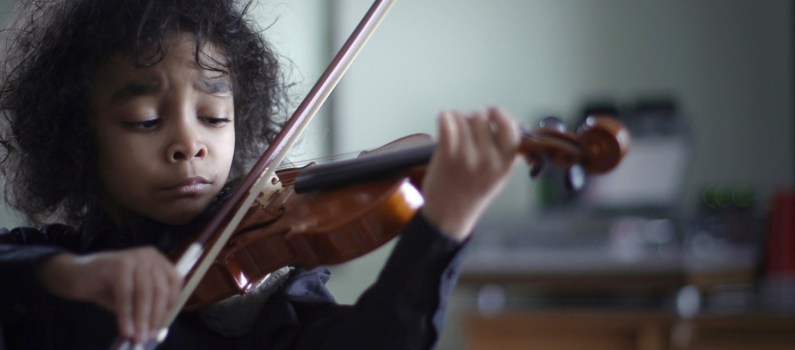 Caesar Sant practicing his violin
Caesar Sant practicing his violin
Caesar Sant is something of a childhood prodigy. He started playing the violin at two years old, and amazed his instructors with his prowess on the stringed instrument. At four, he could do third-grade math and speak six languages. By five, however, the sickle cell disease, which he had been diagnosed with at birth, was taking its toll. Caesar suffered three strokes, and the last had left him unable to play the violin or even walk.
Sickle cell disease is where the body’s red blood cells become rigid, inflexible and mis-shaped, changing from a disk shape to a curved shape that looks like a crescent moon or an old farm tool known as a sickle. These “sickle” cells tend to stick together and block the flow of blood and oxygen to the body, causing pain in the extremities and—as in Caesar—strokes.
Through hard work and perseverance, Caesar has been recovering from his strokes and is back to playing the violin. Monthly blood transfusions help relieve the symptoms for his sickle cell disease but the best treatment lies in a blood transplantation. The Sants’ knew the best possible source of stem cells for transplantation was a baby’s umbilical cord blood and that researchers have seen excellent results using cord blood to treat sickle cell in siblings.
In-vitro fertilization allows parents to test the ova for sickle cell trait and implant ones that will not have the disease, and that’s just what the Sants did. In their case, it also allowed them to find a 100% perfect match for Caesar. Baby Helen was born on December 7, 2014, and her stored umbilical cord blood holds the key to Caesar’s sickle cell treatment. There is just one more hurdle to overcome, and unfortunately, it is a big one.
The Sants’ cannot afford the cord blood transplant procedure. Lucas left his job as a neuroscientist to aid Caesar’s stroke recovery, and Aline stays at home to tend to the children. Their insurance ran out in 2015, and they estimate the out-of-pocket costs for everything leading up to and after the procedure to be more than $500,000. Hope lies in a Go Fund Me page and a book they hope to publish about their journey to give them the funds needed to proceed with the cord blood transplantation.
Watch a National Geographic video of Casear's story: